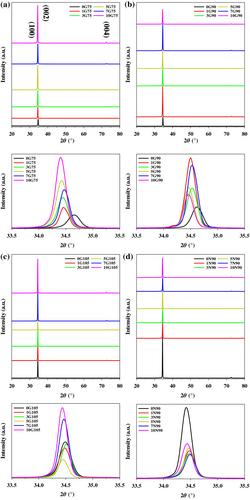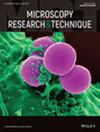Effect of foreign impurity and growth temperatures on hexagonal structure and fundamental properties of ZnO nanorods
Abstract
This study examined the influence of growth temperature and dopant concentration on the properties of Gd- and Ni-doped zinc oxide nanorods (ZnO NRs). ZnO seed layers were deposited on glass substrates using a sol–gel and dip-coating approach. Gd- and Ni-doped ZnO NRs were hydrothermally grown on the seed layers at different temperatures such as 75, 90, and 105°C for a constant growth time of 5 h. The crystal structure, optical, surface morphology views, and electrical properties of the NRs were extensively investigated by x-ray diffraction (XRD), scanning electron microscopy (SEM), UV–visible spectroscopy, and four probe experimental methods. The XRD analysis confirmed the successful substitution of Zn2+ ions by Gd3+ and Ni2+ within the ZnO main matrices. The reordering of hexagonal structures with varied electronegativity, ionic radius dimensions, and valence electron states of Gd and Ni dopants affected seriously the fundamental characteristic features of NRs. The SEM images showed that the ZnO NRs grown at 90°C possessed a more favorable surface morphology and well-defined hexagonal shape compared with those grown at other growth temperatures. Higher dopant concentration led to an increase in NR diameter but a decrease in density depending on the increase in the space between the NRs. Additionally, the optical transmittance was found to generally enhance with increasing dopant concentration. The results obtained highlighted the interplay between growth temperature, dopant type and concentration in tailoring the structural, morphological, and optical properties of Gd- and Ni-doped ZnO NRs, paving the way for the development of optimized nanomaterials for various applications.
Research Highlights
- The XRD analysis confirmed the successful substitution of Zn2+ ions by Gd3+ and Ni2+ within the ZnO main matrices.
- The SEM images showed that the ZnO NRs grown at 90°C possessed a more favorable surface morphology and well-defined hexagonal shape compared with those grown at other growth temperatures.
- The optical transmittance was found to generally enhance with increasing dopant concentration.
- The results obtained highlighted the interplay between growth temperature, dopant type and concentration in tailoring the structural, morphological, and optical properties of Gd- and Ni-doped ZnO NRs, paving the way for the development of optimized nanomaterials for various applications.


 求助内容:
求助内容: 应助结果提醒方式:
应助结果提醒方式:


